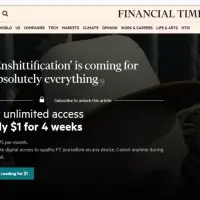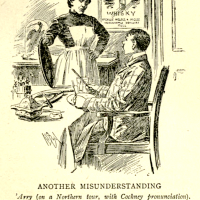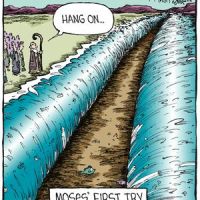 After a teaching foundations course (theory), my first college course in teacher prep was “Teaching Methods.” Ever since, I have loved the diversity of ways that we can draw a group of people to a moment of discovery.
After a teaching foundations course (theory), my first college course in teacher prep was “Teaching Methods.” Ever since, I have loved the diversity of ways that we can draw a group of people to a moment of discovery.
I am a good lecturer and do well at leading discussions, but I am always eager to add new teaching tools to my belt. Some of this has to do little tricks of the trade. For example, I like to integrate music, videos, poetry, great quotations, and art into my lectures. I have walked into class with a guitar or ukulele, or a wadded up ball of tape, or toys from my son’s toy chest. I do use Powerpoint, when I need to, but I try to make it attractive and useful when I do. I also use Prezi, or white board markers, or chalk, or a single word on a white page.
I will do anything in a classroom to win the students.
Occasionally something comes along that is more than a trick of the trade, but is really a new approach to teaching. My default is lecture-discussion. Sometimes this works. My “Sasquatch Lecture” is one I do from time to time and well received. As is my “How to Get an A” talk. I am a decent lecturer.
But one day I read somewhere on a forum that “you should always begin a lecture with a question.” I dropped the “always,” but I have found the first question to be transformational. Another time a lecturer said, “at the end of your talk you need to bring experience and knowledge together, or you will drive them apart.” Since then, I have become intentional about giving pathways to response to the material. These are two transformational moments for me as a teacher.
 This book, Make Just One Change: Teach Students to Ask Their Own Questions, is another one of these moments. The authors, Dan Rothstein and Luz Santana, are part of the Right Question Institute at Harvard, and have formed this approach to teaching over 25 years of experimentation. In Make Just One Change they make two simple arguments:
This book, Make Just One Change: Teach Students to Ask Their Own Questions, is another one of these moments. The authors, Dan Rothstein and Luz Santana, are part of the Right Question Institute at Harvard, and have formed this approach to teaching over 25 years of experimentation. In Make Just One Change they make two simple arguments:
- All students should and can learn to formulate their own questions
- All educators can easily teach the skill as part of their regular practice
That’s actually three arguments—the “should” and “can” are really radical statements on their own—but the simplicity of this claim bears out the importance of their method. In this short (though expensive) 150-page book, Santana and Rothstein lay out “step-by-step processes designed to facilitate the asking of many questions.”
It sounds simple, but any teacher at any level after elementary school—including my own work as a university and college teacher, both in class and online—knows the challenges of creating an environment where questions are valued and students can take the risk to ask them. A step further, we know the challenge of teaching students to use questions to sharpen their focus as they engage with the world of ideas.
In suggesting the can get students to ask great, relevant questions, Santana and Rothstein’s make no mean claim. They could be a great resource for the teaching world. And if they can’t back it up, they will receive the collective cold shoulder of North America’s 4 million teachers.
 What they propose is called the “Question Formulation Technique” (QFT). They have targeted three kinds of thinking to develop in this process: divergent thinking, convergent thinking, and metacognition. Divergent thinking is the ability to take an idea and run with it, taking it in new directions. Convergent thinking is the opposite (or partner) skill, the ability to bring an idea down to its core, to weigh evidence, and to focus the problem. Metacognition is the ability to think about the way you think.
What they propose is called the “Question Formulation Technique” (QFT). They have targeted three kinds of thinking to develop in this process: divergent thinking, convergent thinking, and metacognition. Divergent thinking is the ability to take an idea and run with it, taking it in new directions. Convergent thinking is the opposite (or partner) skill, the ability to bring an idea down to its core, to weigh evidence, and to focus the problem. Metacognition is the ability to think about the way you think.
There are perhaps other ways of thinking that they could have included, like inversive thinking, or epistemological discovery, but these three capture the key skills we want students to grasp when it comes to critical thinking, engaged writing, listening, communication, discussion, research, and creative expression.
With these thinking goals in mind, the Right Question Institute has created a relatively simple 6-point exercise that can, within an hour, teach students the beginning of recovering the ability to ask great questions—recovering what came natural as children, but slips away in our “maturity” and “education.” This question formation time can be used to create a topical discussion, but also as roots of a research paper, as a prompt for test preparation, or as a tool to seal in a school unit.
 The Question Formulation Technique has six full steps (which I pasted from their website below). Essentially, they work like this:
The Question Formulation Technique has six full steps (which I pasted from their website below). Essentially, they work like this:
- The Question Focus, or QFocus: Teachers design a teaching prompt that will begin students thinking about their discussion. This will not be a question—teacher questions are embargoed for this exercise (to my great discomfort). It is meant to be clear, though can be either a concrete or abstract idea. For example, you can just write “drugs” on a white board, or you could play a 30 second film clip. As long as it stimulates discussion, it will work. It is key, though, that it is not just the instructor’s bias (another one of the things I like to do, though sometimes my class statement of belief is an act for the lecture).
- Produce Questions: Students will then make their own questions in small groups, with a scribe in each group taking the questions down. This is a strictly guided time, and key to the exercise. There are four essential rules so students can produce their own questions:
- Ask as many questions as you can.
- Do not stop to discuss, judge, or answer the questions.
- Write down every question exactly as it is stated.
- Change any statement into a question.
This will drive some teachers mad! No commenting on questions. Don’t even say things like “good question” or “oh, that’s interesting.” Instead, with each question, just say, “thank you.” Why? Because you will leave the weighing of a question’s vakye to your students.
- Improve Questions: This is still done in groups, and you will teach your students to do this. There are three main tools that will help students begin to hone in on the most effective questions:
- Categorize the questions as closed- or open-ended.
- Name the advantages and disadvantages of each type of question.
- Change questions from one type to another.
- Prioritize Questions: Students in groups will then:
- Choose what they think are the three most important questions; and
- Explain why they chose those three as the most important.
- Next Steps: This will depend on what your question program is for. It may lead to a discussion of the topic in the Qfocus, or may lead to a project. You are answering this question: How are you going to use your questions?
- Reflection: Key to the process is getting students (and teachers) to discuss the value of the process. What did students learn? What did they feel or experience? As students share their priority questions and defend them, the teacher will see the value of the process. But do students see it? To encourage metacognition, this step is key.
 All of this happens in a fairly controlled environment: tight limits of time, strong enforcement of rules, and the constant support by the teacher(s) or facilitator(s). It is pretty intriguing. As I first encountered the material, I saw immediately what it could do.
All of this happens in a fairly controlled environment: tight limits of time, strong enforcement of rules, and the constant support by the teacher(s) or facilitator(s). It is pretty intriguing. As I first encountered the material, I saw immediately what it could do.
Some of this goes against the grain of teacher instincts. We don’t like creating artificial choke points in a process. Not allowing discussion at Step 2 seems pretty weird. And then cutting down what are probably many great questions: it’s the kind of thing that puts teachers in a cold sweat. And if that is not enough, teachers are not encouraged to give examples during the process.
 This is enough for many teachers to lay down the book and walk away.
This is enough for many teachers to lay down the book and walk away.
Yet, sometimes an artificial process is needed to create a safe space for an authentic process. We want students to ask their own questions, but through years of neglect (and occasional decay), the “curiosity muscle” in a teenager or young adult’s brain no longer has the muscle memory to do this. Add years of being smacked for asking questions combined with a real lack of authentic positive reinforcement in a generation where musical chairs has one extra chair, not one less, and you see the need to be intentional about making space for this discovery—the recovery of what every toddler does so well.
I think the process is a good one, and the book, Make Just One Change, does what a book like this should: it lays out the program, gives testimonials and examples, and gives a defense for the method. One Change is very brief, and can easily be read and applied in a single-day resource retreat. The authors have years of research that back up their work, but they keep the research in the footnotes. It is almost an ideal way to present a new teaching technique to the world.
Who is this book for?
 Obviously, it is for classroom teachers. Beyond the youth market, though, I think that university lecturers could easily use this as a tool for discovery. Beyond schools, I think it could be used by:
Obviously, it is for classroom teachers. Beyond the youth market, though, I think that university lecturers could easily use this as a tool for discovery. Beyond schools, I think it could be used by:
- Psychologists and counselors to help a group or individual chart a recovery/discovery plan.
- Pastors and church educators in transforming approaches to Bible studies, sermons, small group meetings, and classes.
- Teachers, mentors, youth coaches, and counselors to help a student or group of youth to explore career pathways.
- Business leaders in helping a team work through a program or break through an issue.
- Writers could use this as a way of developing a storyline or working through character development issues.
I know that this review is so glowing that it seems like a late night infomercial. I am not arguing that this is the new way that every teacher should teach in every situation. But I was won over by the authors as they laid out an easily adapted program that provides a new, meaningful teaching technique. Moreover, I was impressed with how the method was successful in other places in engaging with students on the threshold of educational failure—students in poorer communities or with challenges to learning because of race, culture, language, or educational skills.
I would encourage people to give this a try. Find the resource and give it a go.
 Dan Rothstein and Luz Santana, Make Just One Change: Teach Students to Ask Their Own Questions (Harvard Education Press: 2011).
Dan Rothstein and Luz Santana, Make Just One Change: Teach Students to Ask Their Own Questions (Harvard Education Press: 2011).
The Question Formulation Technique (from the Right Question Institute Website)
Step 1: Teachers Design a Question Focus. The Question Focus, or QFocus, is a prompt that can be presented in the form of a statement or a visual or aural aid to focus and attract student attention and quickly stimulate the formation of questions. The QFocus is different from many traditional prompts because it is not a teacher’s question. It serves, instead, as the focus for student questions so students can, on their own, identify and explore a wide range of themes and ideas. For example, after studying the causes of the 1804 Haitian revolution, one teacher presented this QFocus: “Once we were slaves. Now we are free.” The students began asking questions about what changed and what stayed the same after the revolution.
Step 2: Students Produce Questions. Students use a set of rules that provide a clear protocol for producing questions without assistance from the teacher. The four rules are: ask as many questions as you can; do not stop to discuss, judge, or answer any of the questions; write down every question exactly as it was stated; and change any statements into questions. Before students start generating their questions, the teacher introduces the rules and asks the students to think about and discuss possible challenges in following them. Once the students get to work, the rules provide a firm structure for an open-ended thinking process. Students are able to generate questions and think more broadly than they would have if they had not been guided by the rules.
Step 3: Students Improve Their Questions. Students then improve their questions by analyzing the differences between open- and closed-ended questions and by practicing changing one type to the other. The teacher begins this step by introducing definitions of closed- and open-ended questions. The students use the definitions to categorize the list of questions they have just produced into one of the two categories. Then, the teacher leads them through a discussion of the advantages and disadvantages of both kinds of questions. To conclude this step, the teacher asks the students to change at least one open-ended question into a closed-ended one, and vice versa, which leads students to think about how the phrasing of a question can affect the depth, quality, and value of the information they will obtain.
Step 4: Students Prioritize Their Questions. The teacher, with the lesson plan in mind, offers criteria or guidelines for the selection of priority questions. In an introduction to a unit, the instruction may be, “Choose the three questions you most want to explore further.” When designing a science experiment, it may be, “Choose three testable questions.” An essay related to a work of fiction may require that students select “three questions related to the key themes we’ve identified in this piece.” During this phase, students move from thinking divergently to thinking convergently, zero in on the locus of their inquiry, and plan concrete action steps for getting information they need to complete the lesson or task.
Step 5: Students and Teachers Decide on Next Steps. At this stage, students and teachers work together to decide how to use the questions. One teacher, for example, presented all the groups’ priority questions to the entire class the next day during a “Do Now” exercise and asked them to rank their top three questions. Eventually, the class and the teacher agreed on this question for their Socratic Seminar discussion: “How do poverty and injustice lead to violence in A Tale of Two Cities?”
Step 6: Students Reflect on What They Have Learned. The teacher reviews the steps and provides students with an opportunity to review what they have learned by producing, improving, and prioritizing their questions. Making the QFT completely transparent helps students see what they have done and how it contributed to their thinking and learning. They can internalize the process and then apply it in many other settings.























Pingback: Teaching Students to Ask Their Own Questions, with the Right Question Institute — A Pilgrim in Narnia – Essay Writing Tips and Help
Pingback: Why Religion Matters: A Mini-Vlog Series | A Pilgrim in Narnia
Pingback: 2016: A Year of Reading | A Pilgrim in Narnia
Pingback: Experimenting on Students: A Thought about Playfulness and Personal Connection in Teaching | A Pilgrim in Narnia
Pingback: The Office Hours Dialogues: What I Am Looking For in a Research Paper (Part 1) | A Pilgrim in Narnia